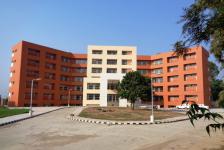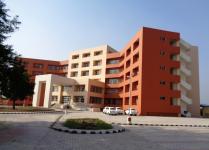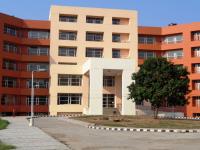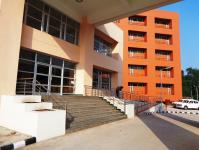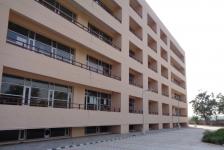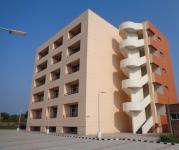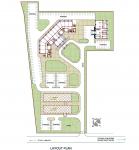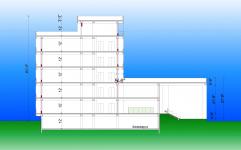Agriculture Bhawan, Mohali has been designed with the aim to accommodate various offices of Department of Agriculture, Department of Horticulture and Soil Conservation, Punjab at one place. Presently there are more than one dozen offices of these departments which are functioning from various rented premises scattered all over the city. Bringing all these offices under one roof will not only ensure better coordination amongst them but also add to the convenience of farmers who visit these offices from far flung places.
Agriculture Bhawan is located on a plot of 5.75 acres. The five-storied building has a covered of 115284 square feet. Apart from this a Hostel Block having an area of 14147 square feet has also been planned in the campus.
The form and shape of the building has been dictated by the shape of the plot and the direction of the sun. The design of the building ensures that major chunk of office space falls on north side to get glare free natural light throughout the day. Some offices, mainly officers’ rooms and services have been placed on southern side.
The plan of the building follows the conventional pattern of doubly loaded corridor running in the centre and giving access to the offices on north and south sides. Services have been placed at the ends of the corridor. Two lifts and three staircases are provided for vertical circulation. Apart from functional appropriateness, the building shows clarity in structural systems and services. The load bearing structural components i.e., RCC columns and services are strictly stacked vertically with almost negligible staggering. The clarity thus evolved is truthfully expressed in the building form. The building seems to follow the dictum of “Form Follows Function” plus “Structure and Services”
Like most of the buildings by the architect, the plan of this building also follows the rule of symmetry. Architect feels that strong geometrical and symmetrical plans have more acceptance than asymmetrical plans. This is due to the persistence of such liking as besets the common human mind-set. Architecturally speaking, such plans are less vulnerable to undesired changes suggested or attempted by some clients at later stages.
Efforts have been made to design the building for energy efficiency. For this the measures like ‘thick outer envelope’, ‘deep recessed fenestrations’ and ‘roof overhangs’ have been incorporated in the design. Ducts/service shafts placed along the outer periphery act as cavity walls and protect the interiors from external heat, which results in natural cooling in summers. The plan of the building has been shaped in such a way that most of its parts remain in mutually created shade. Special emphasis has been laid on natural lighting in the building. The fenestrations are judiciously located so that almost all the areas in the building get natural light. Very deep areas, too far away from external glazing have been avoided. Architect feels that as sun is the source of all energy, one should be able to have a glimpse of sunshine outside while sitting inside. This way one remains cheerful throughout the day. Obviously, such interiors are well protected from the vagaries of weather.
The building is a pleasant combination of urban modernity and rural rusticity. The urban modernity which mainly pertains to the interiors is meant for providing comfortable working conditions to the staff. Well lit interiors, latest finishes, open-plan systems and selective air conditioning add to this aspect of the building. The rural rusticity, orderliness with fixity and rigidity expressed on its exteriors makes the building belong to the farmers who hail from rural Punjab and have, by and large, rustic life styles.
2010
2014

